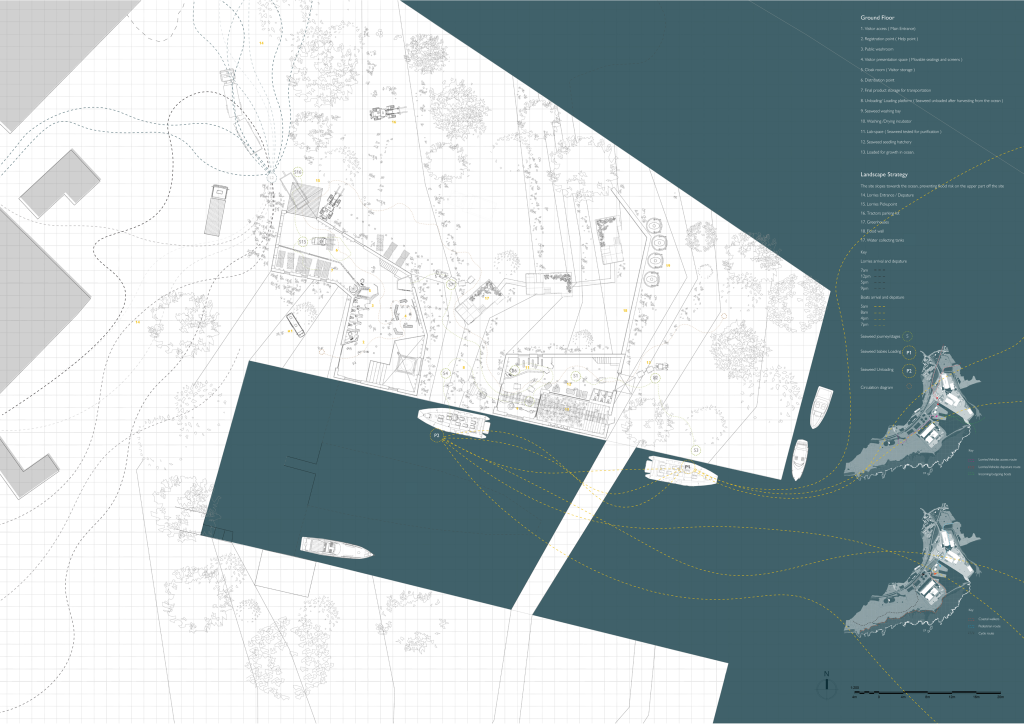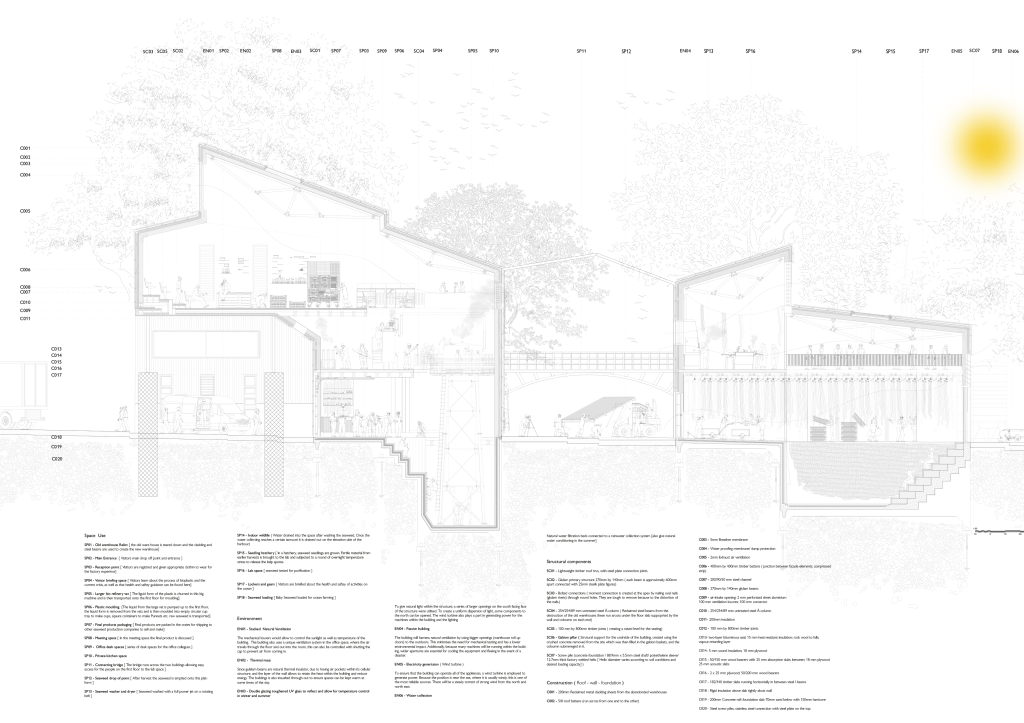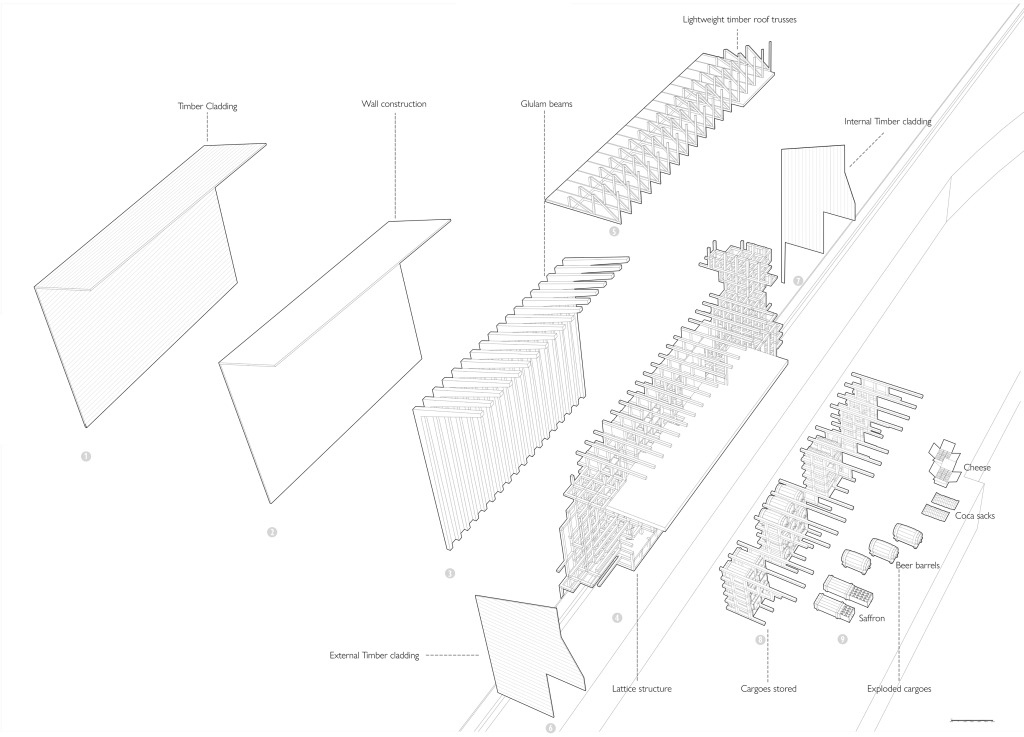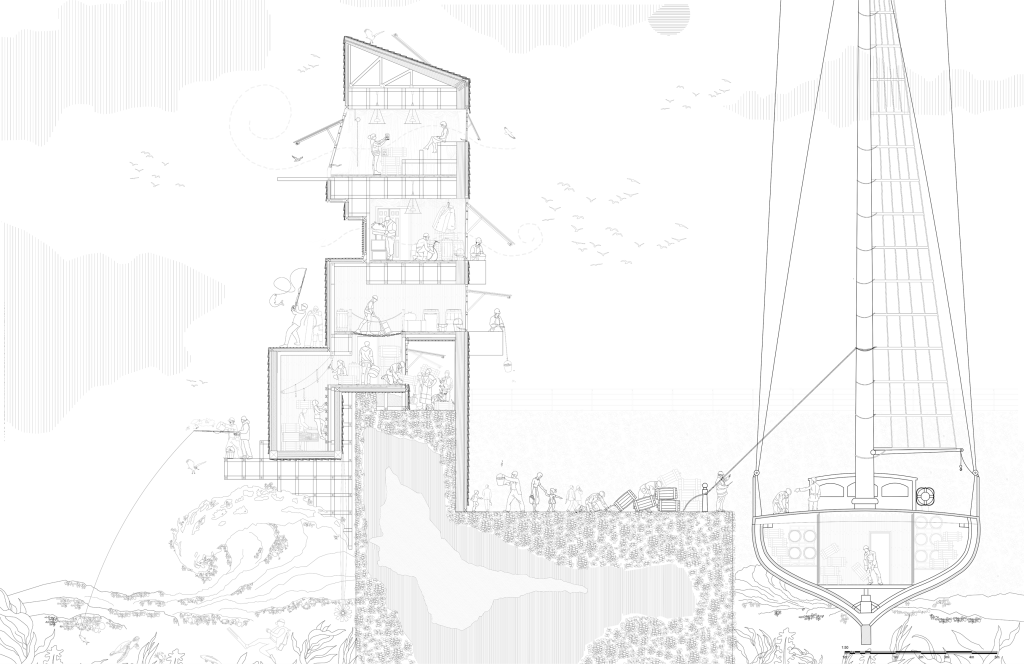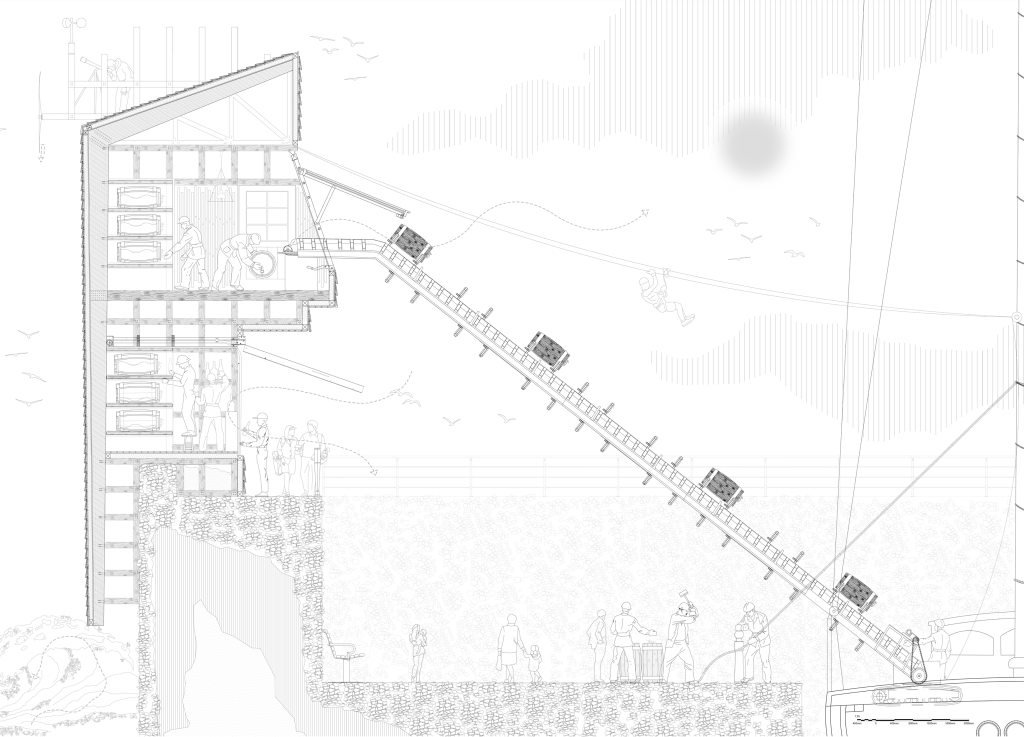Bupesh Hirani
The Anatomy of a Warehouse
Seaweed is a natural product with incredible properties that is starting to be utilised increasingly in today’s climate; with local offshore farms beginning to sprout up in Cornwall, the Par Horticultural Seaweed Centre is both a processing plant for horticultural seaweed products and a community space for locals and tourists alike. While distributing these amazing products across the country it was also important to ensure that the project also gave back to the community, with spaces for events, a beautiful garden to enjoy and tourist attractions to experience; bringing people together in Cornwall and providing a new route for income in one of the most impoverished counties in England. Each “wing” of the dock represents the two areas of both ‘production’ and ‘community,’ combining in their use and processing of seaweed.
Concerns over single-use packaging and plastics in the seas have risen dramatically in recent years as the global ramifications of our throwaway culture have become apparent, one of the rising concerns relates to fishes and other sea creatures consuming plastic. Over the last 70 years, the demand for plastic has risen. According to Plastic Ocean, 300 million tonnes of plastic are generated globally every year. Half of the plastic is utilised for one-time use throwaway goods. As a result, every year, more than 8 million tonnes of waste plastic end up on our seas. Although the notion of bioplastics is enticing, there are questions about their long-term viability. This project aims to raise awareness on using minimal or no plastic at all as well as improving the situation by making seaweed plastic products that are shipped/sold to other business campaigns, The construction of a local seaweed facility in par could be the start of a larger initiative to inspire, educate, and redefine the way we live and would allow the community to celebrate bringing industry back to Par, and providing more enrichment to Par. The project builds a pioneering community, the program brings together a creative, resilient, and driven group of individuals. This will allow the development of new methods of living as a community, resulting in an integrated cycle of production and regeneration on the property.
Email: Bhirani79@gmail.com
Instagram: Bhupesh_hirani
Website: https://bhirania4b3.myportfolio.com/
LinkedIn: www.linkedin.com/in/bupesh-hirani
A Moving Home for Cargoes
Introduced in the heart of Reading Town, Hogmanay, the Scottish celebration of New Years, brings a large infusion of culture and festivity to the local area. Cock-a-Leekie soup, being an integral cuisine of the Scottish, accompanies the festivities. The influx of Hogmanay culture, introduced by the arrival of the Soup Facility, will indulge Reading in a host of traditions that seek to bring people together to celebrate the New Year and the fresh start that follows midnight. On New Year’s Eve in Reading, the public are invited to join in the activities, including; farming the ingredients for the soup, trying the soup, setting Juniper branches alight at midnight, Ceilidh dancing, drinking homemade Gin, and the chance to watch as the chefs produce the soup from raw ingredients on site.
Cock a Leekie , Scotland, Timber, Homemade, Feathers, New years
There are two parts to the project ‘CARGO,’ and throughout these phases, I explore the possibility of constructing a mini-distribution point that will also serve as a platform (not literally) for sharing messages about sustainable cargoes and sustainable shipping. My ‘pop up’ distribution point travels disassembled with the ship in the first phase, and it is set up as we stop at small ports to facilitate unloading, distribution, and message-spreading about the nature and qualities of imported goods, as well as to raise questions about the ship’s sustainable future, the four cargoes selected were (cheese, beer, cocoa beans, saffron) these were distributed on the harbour to visitors and as wholesale. The building is made from glulam timber because glulam beams are natural thermal insulators with air pockets inside their cellular structure, the layer of the wall allows to keep heat within the building and saves energy. The structures are also insulated throughout to keep places warm at certain times of the day. In the Second Phase, I kept all the aspects from the first phase’s brief, but revised the design, expanding and refining the scale of my chosen cargoes from the first phase and combining them with the second phase’s extra facilities.



